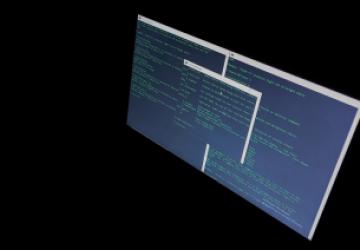Revolutionizing Command Line Interface with Dynamic Themes

The command line interface (CLI), often simply called the terminal, is an essential tool for developers, system administrators, and power users. Despite its fundamental role in computing, the terminal is often overlooked in terms of user interface and aesthetics. However, with the advent of terminal themes, this crucial tool can be transformed into a visually appealing and more productive workspace. This article delves into the world of terminal themes, explaining how they can elevate the user experience from mundane to magnificent.
The Aesthetics of Terminal ThemesTerminal themes redefine the visual aspects of the command line interface. These themes alter the color schemes, font styles, and background settings of the terminal, offering a more personalized and enjoyable user experience. For instance, a well-designed color scheme not only adds visual appeal but also improves readability and reduces eye strain, particularly during extended periods of use.
The choice of fonts in terminal themes is not just a matter of aesthetic preference; it also impacts the clarity and readability of the text. Monospaced fonts, for instance, are often favored in terminal settings for their uniformity and ease of reading.
Background options in terminal themes range from solid colors to more dynamic, image-based backgrounds. These choices can significantly affect the overall look and feel of the terminal, allowing users to create an environment that reflects their personal style and preferences.
Popular Terminal ThemesThere is a plethora of terminal themes available, each offering its unique palette and style. Some of the most popular include:
-
Solarized: Known for its carefully selected color palette designed to reduce eye strain and enhance readability. Solarized comes in both a light and dark mode, catering to different lighting conditions and user preferences.
-
Dracula: A dark theme that features a rich, contrasting color scheme. It is widely appreciated for its modern look and is available across various terminals and editors.
-
Nord: This theme offers a cool, arctic-inspired color palette with a focus on readability and unobtrusive UI elements. Its soothing colors are favored by users who spend long hours at the terminal.
Each of these themes is available on multiple platforms, including Windows Terminal, macOS Terminal, and various Linux terminals, ensuring a wide range of accessibility.
Customization and PersonalizationInstalling and applying a terminal theme is typically straightforward. Most modern terminals come with a settings or preferences section where users can select or import themes. The customization doesn't end with the installation of a theme. Users can adjust specific colors, change fonts, and even tweak background settings to create a completely personalized experience.
For those who wish to create their own themes, there are several tools available, such as terminal theme editors and online palette generators. These tools often provide intuitive interfaces, making theme creation accessible even for beginners.
Beyond Aesthetics: Functional Benefits of Terminal ThemesApart from enhancing the terminal's look, themes offer functional benefits. A well-designed theme can improve the readability of text and reduce eye strain. This is particularly beneficial for users who work in different lighting conditions, as they can switch between light and dark themes as needed.
Some themes are designed with workflow enhancement in mind. They might integrate with productivity tools or offer features like highlighted syntax, which can be particularly useful for programmers.
Community and SharingThe terminal theme community is vibrant and collaborative. Many themes are open source and hosted on platforms like GitHub, where users can contribute to their development. There are also specialized forums and websites where enthusiasts share their custom themes and tips.
User feedback is a crucial component in the evolution of terminal themes. It guides developers in refining existing themes and in conceptualizing new designs.
Challenges and ConsiderationsWhile terminal themes bring many benefits, there are challenges to consider. Compatibility with different operating systems and terminal applications can be an issue. Some themes may not work as intended across different platforms, requiring adjustments or even complete rewrites.
Performance is another consideration. Highly customized themes with complex graphics or animations might impact the terminal's performance, especially on lower-spec systems.
Furthermore, it's important to strike a balance between aesthetics and functionality. Overly complex or visually busy themes can be distracting and counterproductive.
The Future of Terminal ThemesTerminal themes are continually evolving. Trends in design and user interface are shaping the development of new themes. There's also a growing integration with other tools and technologies, like IDEs (Integrated Development Environments) and code editors, pointing towards a more unified user experience across different platforms.
ConclusionTerminal themes have the power to transform the command line interface from a bland, monochrome environment into a dynamic and visually delightful workspace. They not only enhance the aesthetic appeal but also contribute to productivity and user satisfaction. As the bridge between functionality and aesthetics in terminal design strengthens, users are encouraged to explore and experiment with different themes, finding the perfect balance that suits their work and style.








